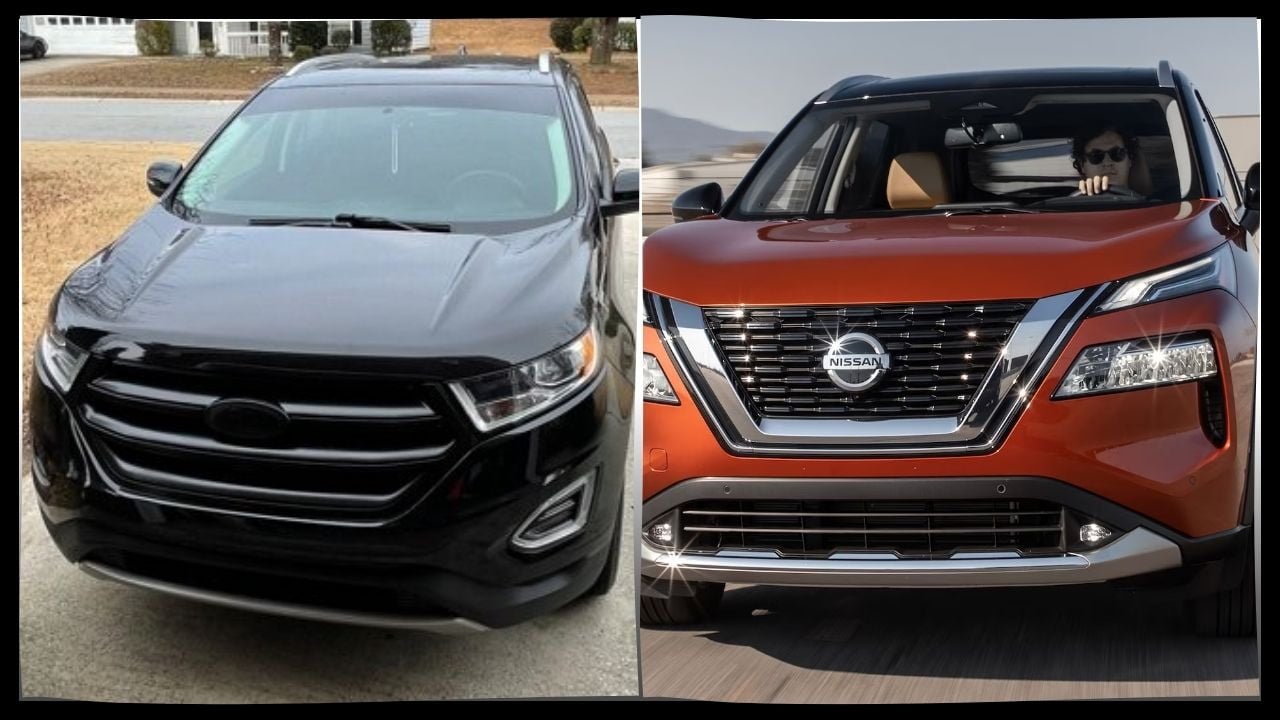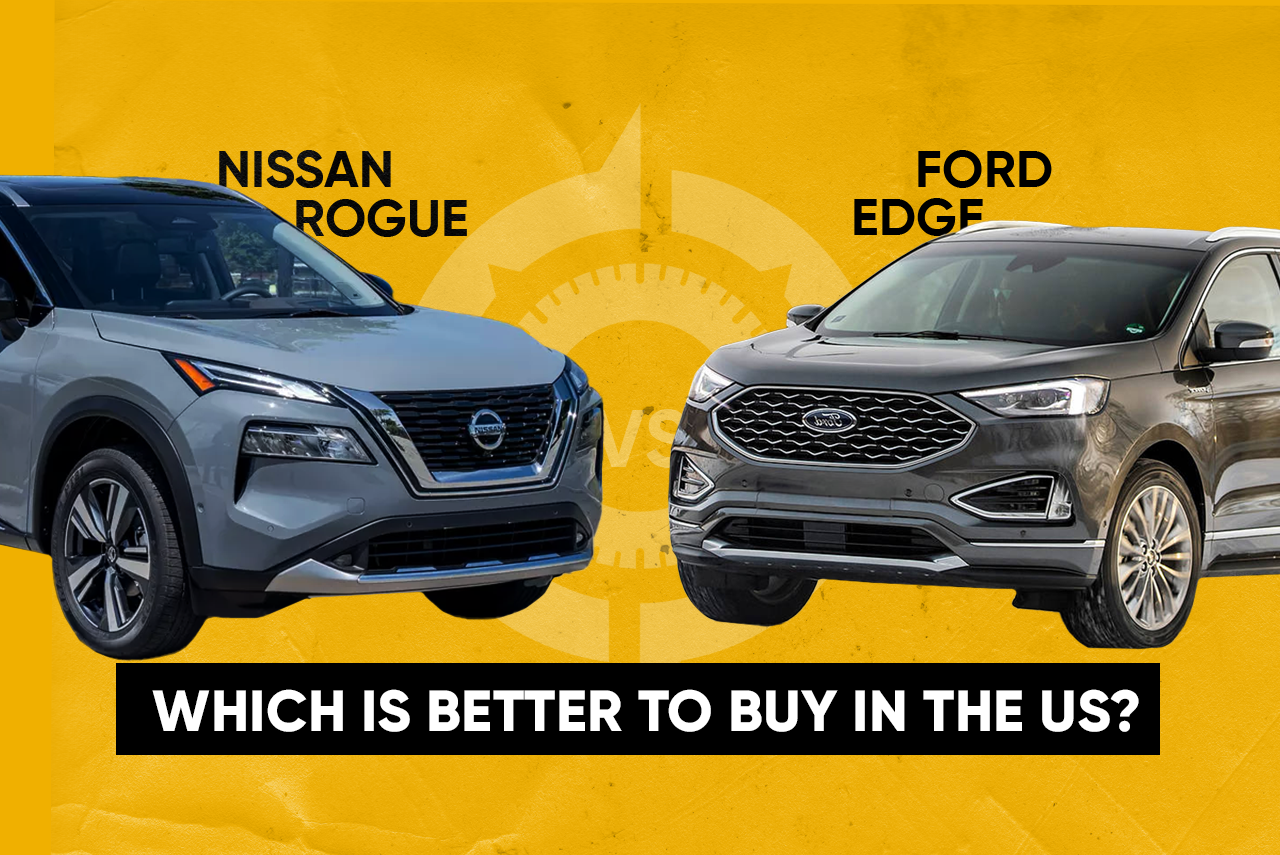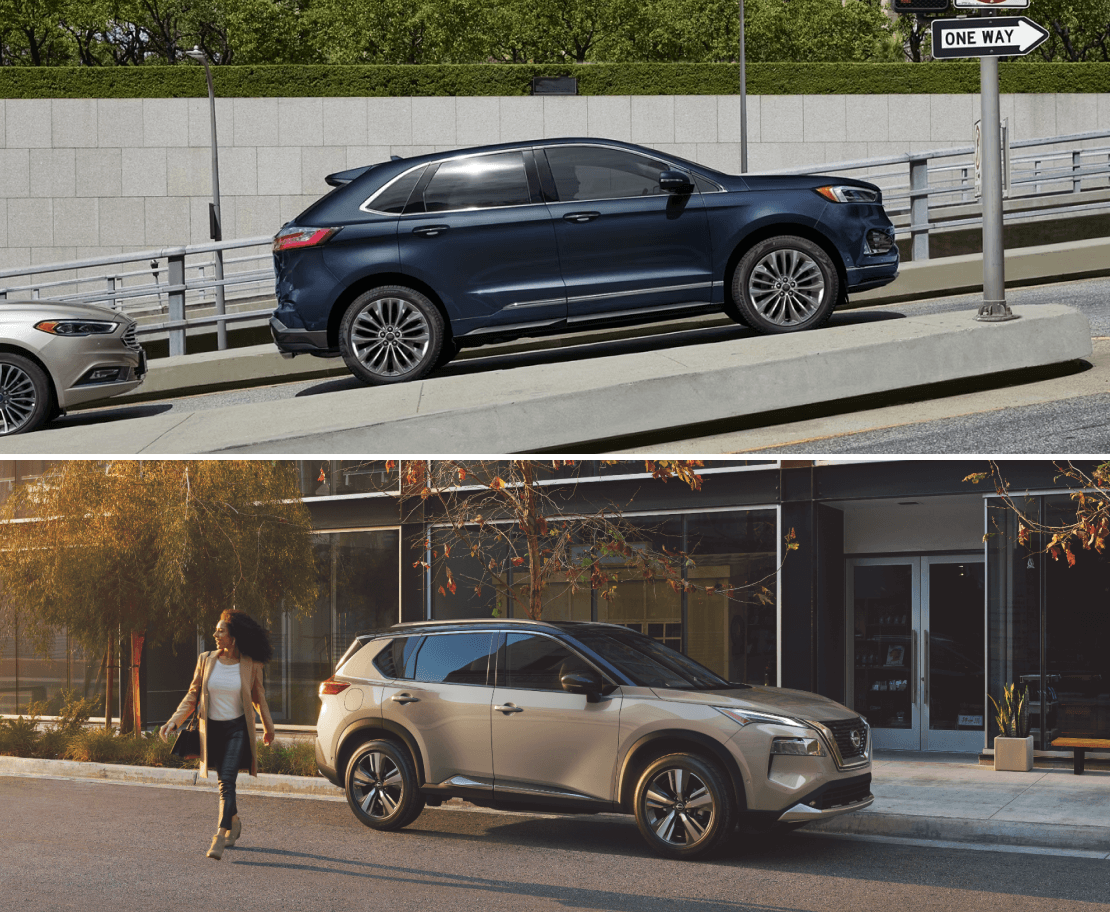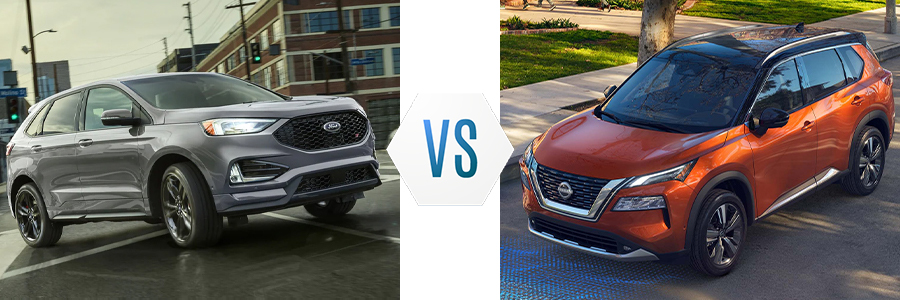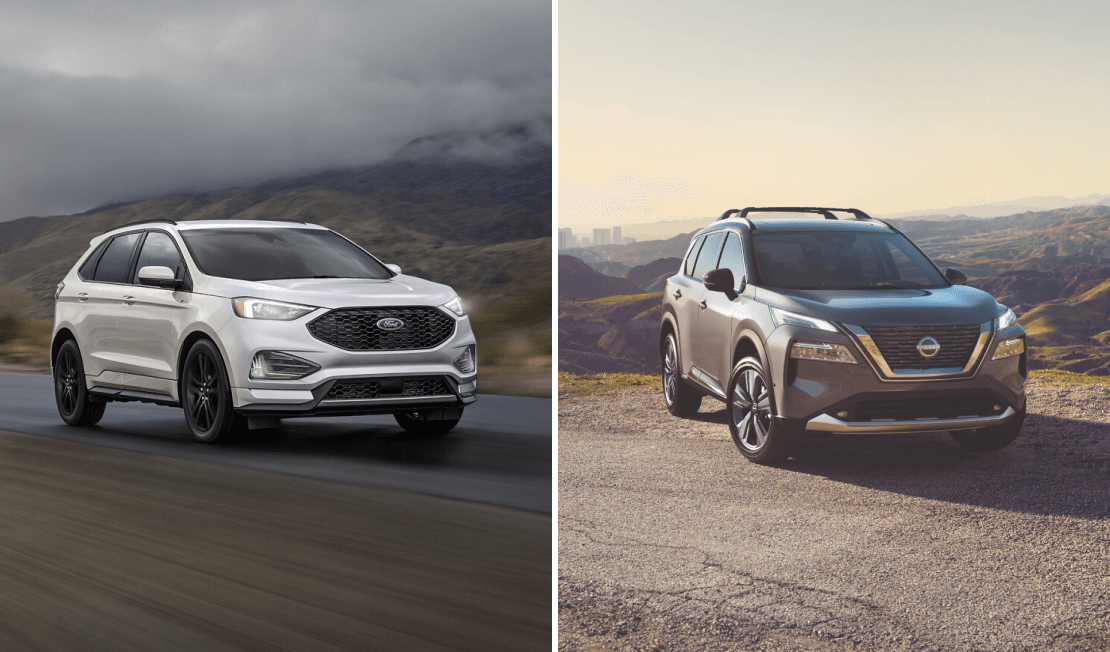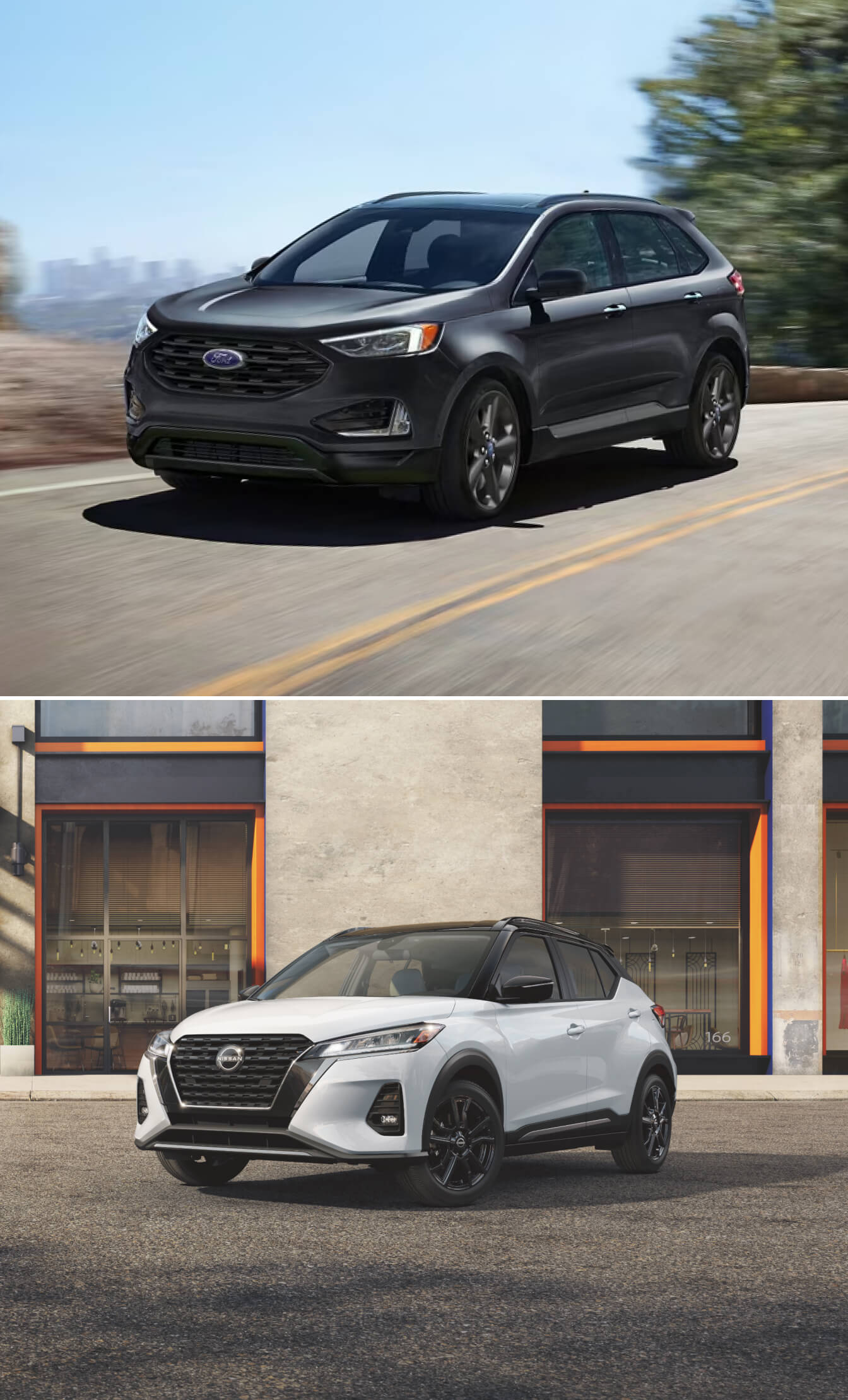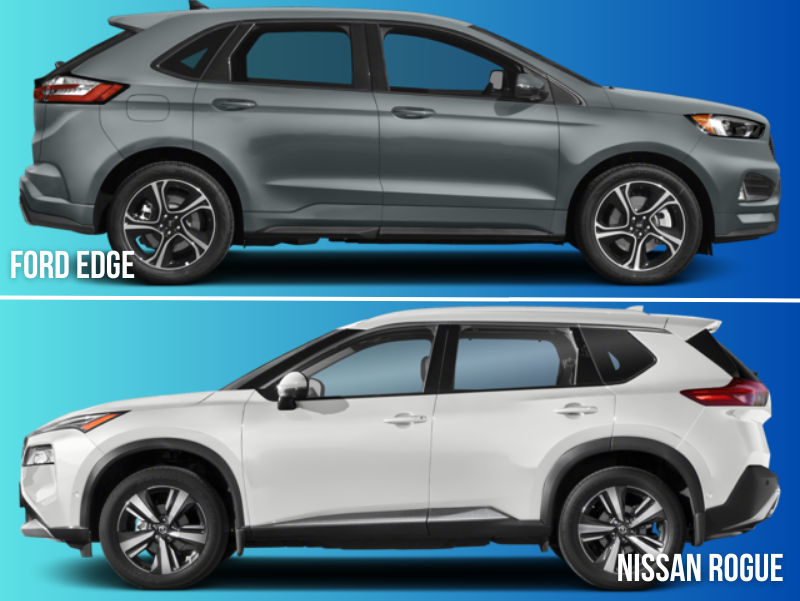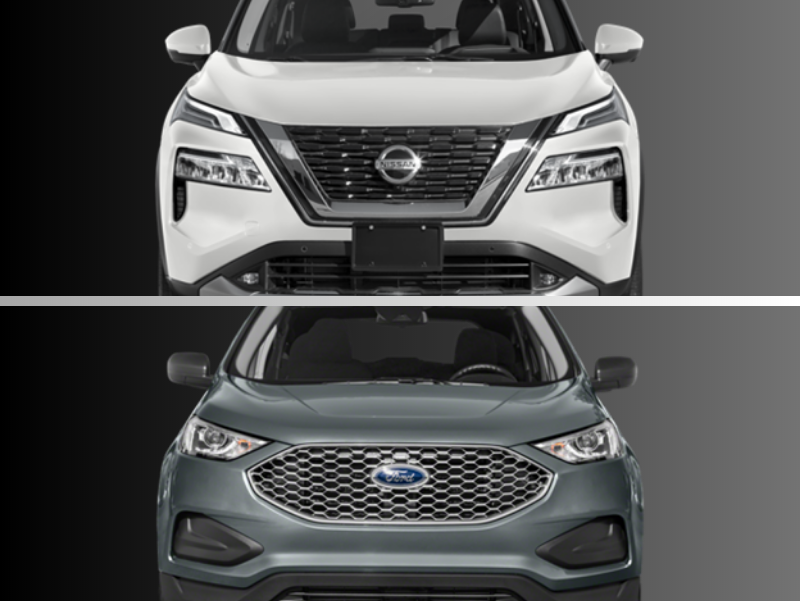Ford Edge Vs Nissan Rogue Size
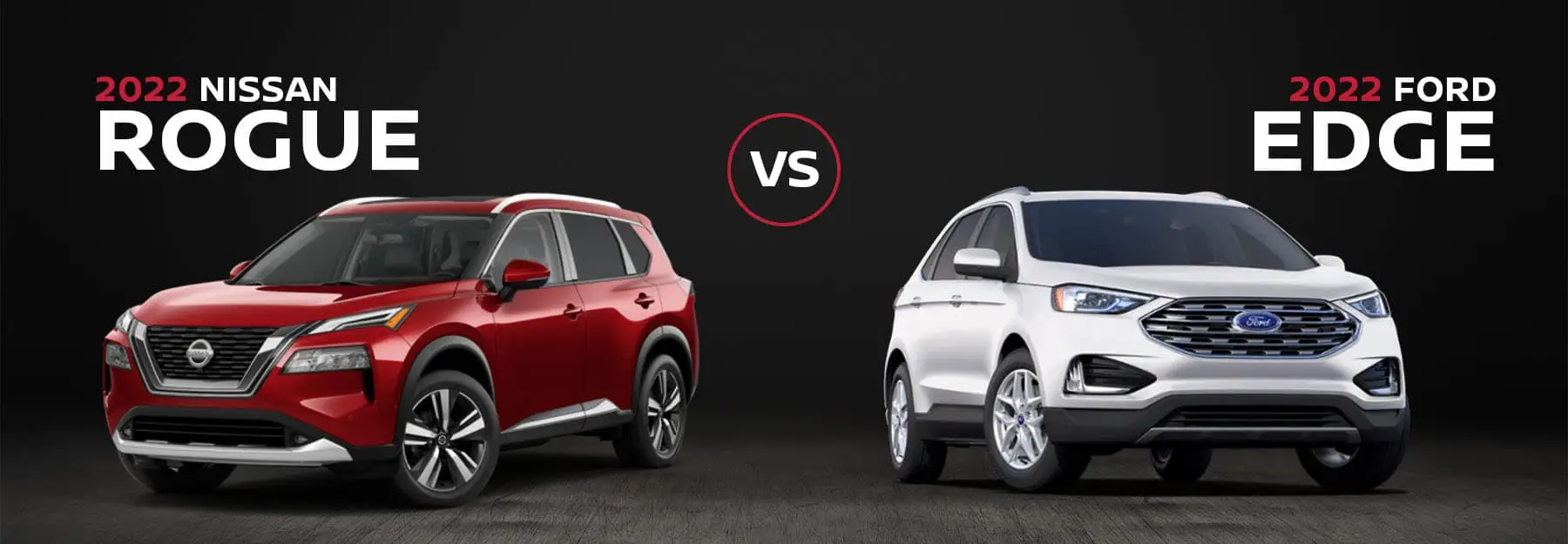
The Ford Edge and the Nissan Rogue are two popular SUVs vying for attention in a crowded market. Understanding their size differences is crucial for consumers seeking the right fit for their needs. This article provides a detailed comparison, drawing on official specifications and expert analysis.
The automotive market offers a wide array of SUVs, making informed decisions challenging for prospective buyers. Size is a primary consideration, influencing cargo capacity, passenger comfort, and maneuverability. Comparing the Ford Edge and Nissan Rogue directly highlights these distinctions.
Dimensions and Exterior
The Ford Edge generally presents as the larger vehicle. Its exterior dimensions typically exceed those of the Nissan Rogue. This difference impacts both aesthetics and practical considerations like parking and garage space.
According to Ford's official specifications, the Edge usually has a greater overall length. This extended length often translates into more legroom and cargo space.
The Nissan Rogue, in contrast, is designed with a more compact footprint. Nissan emphasizes its urban-friendly maneuverability. It's a key selling point for city dwellers.
Length, Width and Height
Detailed measurements reveal the extent of these size differences. The Ford Edge typically measures around 188 inches in length. The Nissan Rogue is generally shorter, often falling within the 183-inch range.
Width measurements also favor the Ford Edge, offering a slightly broader stance. Height differences are usually less pronounced, but still relevant to consider.
These dimensional disparities directly impact interior space and overall vehicle presence. Consumers must consider their priorities when evaluating these figures.
Interior Space and Cargo Capacity
Interior dimensions are where the rubber meets the road for many buyers. The Ford Edge often boasts more passenger volume compared to the Nissan Rogue.
This advantage is particularly noticeable in rear legroom. Taller passengers may find the Ford Edge more comfortable for longer journeys.
Cargo capacity also differs significantly. The Ford Edge typically offers more space behind the rear seats and with the seats folded down.
The Nissan Rogue, while smaller, maximizes its interior space through clever design. Nissan highlights features like the Divide-N-Hide cargo system. This adds versatility even within its more compact dimensions.
Passenger Volume and Legroom
Examining specific numbers, the Ford Edge frequently provides over 110 cubic feet of passenger volume. The Nissan Rogue, on the other hand, typically offers closer to 105 cubic feet.
Rear legroom in the Ford Edge often exceeds 40 inches. The Nissan Rogue commonly provides around 38 inches, which may be less comfortable for some.
These differences may seem minor on paper, but they can be significant in real-world comfort. A test drive is crucial to experience these disparities firsthand.
Practical Considerations
Beyond raw dimensions, practical considerations like parking ease and fuel efficiency come into play. The smaller Nissan Rogue often enjoys an advantage in tighter parking situations.
Fuel economy is another important factor for many buyers. The Nissan Rogue generally achieves better fuel efficiency compared to the Ford Edge. Its smaller engine and lighter weight contribute to this advantage.
However, the Ford Edge offers more powerful engine options. This can be a deciding factor for those prioritizing performance. It is at the expense of fuel economy.
“The choice between the Ford Edge and Nissan Rogue often comes down to prioritizing space versus fuel efficiency and maneuverability,” notes a review by Edmunds.com.
Conclusion
The Ford Edge and Nissan Rogue cater to different needs and preferences. The Ford Edge provides more space and potentially greater power. The Nissan Rogue emphasizes fuel efficiency and ease of handling.
Prospective buyers should carefully assess their individual requirements. Factors such as passenger needs, cargo volume requirements, and driving conditions should be taken into consideration.
Ultimately, the ideal choice depends on a balance of these factors. Thorough research and a test drive of both vehicles are essential to making an informed decision.
